I love learning. It is a wonder to me, but I never liked school even though I was good at it. Even the classes that I was most excited to take never satisfied, but quickly became a bore. In all my years of study the only class I ever took that satisfied was Physical Chemistry. Now that was a challenge!
My wife, by contrast, loved school. She read fiction about boarding school before setting off to boarding school at twelve. At her school, they had a bell for everything. When to eat, when to study, when to go to class. She chose her career path, but looked to the school to guide and direct her studies.
My love of learning, by contrast, was fostered almost entirely outside of school. As a youth, I was a sports fanatic. I not only played them, I read all about them – their history, their heroes, their fundamentals. As I aged my interests changed and so did my explorations, but the same unquenchable desire to learn remained. I wanted my children to experience the same love of learning that I have enjoyed all my life.
As my wife and I had our children in rapid succession, each about twenty one months apart, my wife was tired for a good six years or so. That gave me a wonderful opportunity, that many fathers miss, to set the tone for my children’s education. I work full-time so it was not as if I could do everything (nor did I try), but each morning I had a good hour or so with the children before turning them over to their mother. Almost always that time was spent reading to (and later with) my children. We read all sorts of books. Books about animals, books about history, funny books, insightful books, sports books, construction books, science books. Books, books, books.
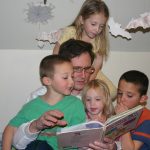 As the family grew, the number of little ones nestled up against me as we read only grew. Each evening before bedtime, the same pastime was repeated. I read simple books to my children, but I also read compelling stories that were far above their grade level. They loved them all and their attention spans, vocabulary and comprehension grew dramatically without any resistance from them for reading was fun. Moreover, as they learned to read for themselves, they joined in the fun as they read to one another.
As the family grew, the number of little ones nestled up against me as we read only grew. Each evening before bedtime, the same pastime was repeated. I read simple books to my children, but I also read compelling stories that were far above their grade level. They loved them all and their attention spans, vocabulary and comprehension grew dramatically without any resistance from them for reading was fun. Moreover, as they learned to read for themselves, they joined in the fun as they read to one another.
Supplementing our reading was much time outside in all sorts of weather. I did not want my children to be afraid of the cold, the heat, the rain nor the snow, so I had my wife get them out no matter the weather. Almost every evening after dinner, we would take a walk or do something outside as a family. During their outside time, our children would explore nature: picking up bugs, frogs and snakes, and identifying birds, flowers and trees. I would also have them run (racing one another or against the clock), play tag, climb trees, explore brooks and rivers. They loved it. All the while their physical vigor, coordination and balance were growing as were their powers of observation and creativity.
Saturday was daddy’s day with the children. Frequently, I would take them out adventuring. Sometimes this would be a multiple hour long hike up a mountain, stream or path. Other times, we might visit a historical site, museum, library, art gallery, science exhibition or some other place. Always it was fun and educational. They were learning about many subjects (i.e. science, history, art, music, theatre and dance) without even knowing it.
At the same time I was having fun with our children, my wife was grappling with how to accomplish the day to day task of teaching our children the fundamentals of learning, the 4 Rs as she now calls them. Often she would come running at me with different box curriculums that she wanted to implement. I, much to her chagrin, was quite the hard sell. I had no interest in educating my children into a box. On the other hand, I understood the importance of fundamentals and did not want to sacrifice those at all.
In those early years, my wife would shake off her disappointment, go online to find and print out worksheets for math, use a wonderful book we had on phonics to teach our children the sounds and spelling of English words, print out handwriting worksheets and other things. I was generally pleased, but she was often frustrated – thinking she was not doing enough.
To a certain degree she was right, but she was also missing so much of what was being accomplished. Our children loved books and were reading well. They were physically fit and well-coordinated. They enjoyed exploring the world and all that was in it. Their active little minds were fascinated by all sorts of things.
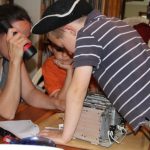
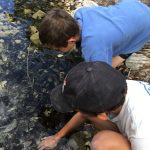
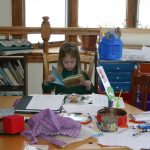
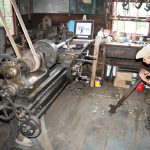
As the years progressed, we expanded the children’s formal education into new areas. Math was our first plunge into a textbook or box curriculum. My wife investigated many options. We chose Singapore Math for our children’s elementary years because of its many word problems. Word problems test your ability to apply the math you are learning. In all my life outside the classroom, every math problem that I have ever had to solve was a word problem. I want my children to be prepared for real life, not some pre-formulated exam.
History was another critical subject to me as I know how many lessons there are to learn through history. My love of history, however, was never nurtured in school. Rather, it was through my many travels and personal studies that I came to love history. So, from early on, I regularly took my children to historic places, read books about historic events and/or people and watched documentaries and period films with them. I remember one time, shortly after we had attended the reenactment of the Battle of Lexington and Concord, I was reading Sam the Minuteman to my children. As the Lobsterbacks came marching onto Lexington Green, my daughter Ruth exclaimed “Daddy, I saw them!”
Eventually, my wife and I fastened onto a series of horizontal history books by Genevieve Foster as our text books for history through the American Civil War. I read the first one, entitled Augustus Caesar’s World to the children. The next one, The World of Columbus and Sons, was read by my wife. Beginning with The World of John Smith of Virginia, my wife created her own unit studies to accompany the books. Now the children study explorers, artists, scientists and leaders of the time period in greater depth. My wife couples our children’s studies with documentaries, book reports, movies, books of the time and field trips to important sites that relate to the people, places and times they study in order to bring history to life.
As the years pass, I have found my role changing. My wife, as she got her feet under her, has carried the lion’s share of the teaching duties for some years now. We interact quite a bit and I help on many fronts, but I see the tone that I established early on carried out by her on a daily basis. The beauty of it is that my wife has added many fun elements into our children’s education that I never would have considered. Our children are the richer for it.
In sum, it took two of us to bring our children into this world and our children need us both in order to receive the education that we both want for them. I encourage fathers to not just dump the education of their children on their wives. The task is too big and too important for fathers to neglect their role. Fathers, when weighing the competing demands on your time, consider the law of sowing and reaping. The time you spend educating your children now will be rewarded in time to come. If you give due consideration to that fact, I believe you find that there are few, if any, more important competitors for your time than the education of your children. Don’t miss it!!!
By Steve Atherton




